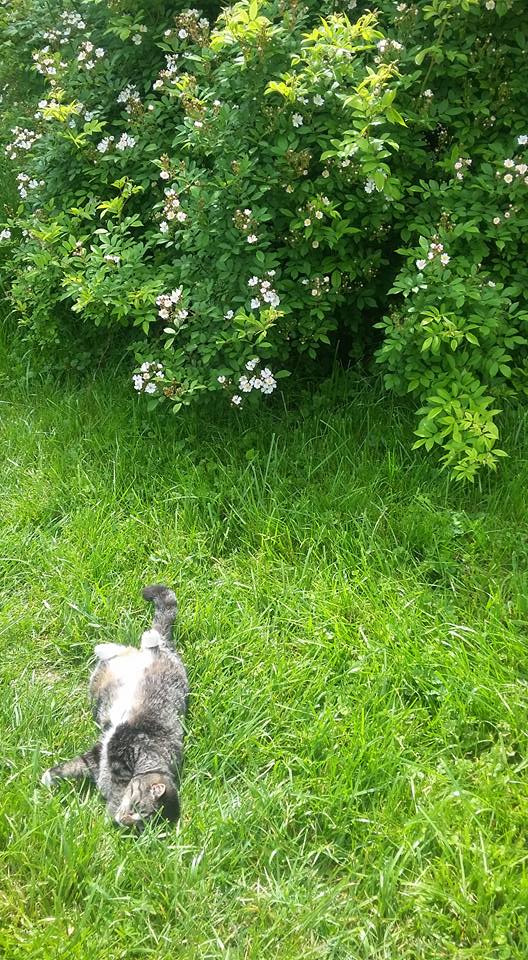
I am not sure how to begin.
My last post on invasive plants wasn’t just random musing; I’m about to start working with one of them, Rosa multiflora. I’ve been gardening and making herbal remedies and of course cooking and eating plants for many years now, but this is an altogether deeper level of work I’m about to begin, unlike anything I’ve ever done before.
It was initiated by the rose herself.
As a garden lover, I think roses are nice, but they probably aren’t my favorite flower (I think that title would go to Japanese irises). Of course rose flowers are beautiful and I do adore the scent. But have you ever looked at the rose bush itself? They’re really not all that attractive.
But those are your ornamental rose varieties. Wild roses are something else again. Wild roses are brimming over with magic and fierce beauty. And as an herbalist, I am in love with rose medicine (I use that term broadly, encompassing the physical, spiritual, and magical). I need rose medicine. (Here’s a good monograph on rose medicine. And another.)
At the farmhouse where I used to live, there were a couple of multiflora rose bushes that had been tolerated as ornamentals–it is a beautiful species–but it grows wild everywhere here. In fact it’s extraordinarily difficult to restrict or eradicate because the gracefully arching canes that make it so aesthetically pleasing even when not in flower (well, I think so) will root wherever they touch the ground, and it tolerates many types of soils and habitats. “In Ohio, it is especially troublesome in the southeastern part of the state” <– understatement (source).
Its thorns are prolific and unusually vicious: I’ve had minor pricks that barely drew blood continue to ache for days afterwards. They can be strongly recurved and seem to reach out and grab you, snagging absolutely every part of you and your clothes. It is universally loathed by people who live or work in the countryside.
But not me. Early on I formed a certain grudging respect for this rose. Yes, she hurt me a lot. Tore up some of my clothes. But she’s a fighter and a survivor–nay, a conqueror.
And yet she’s also every bit a Rose, that millennia-old symbol of love, beauty, and sensuality. In June she is covered in fragrant heaps of little roses–white, some tinged ever so softly pink, with golden centers–beloved of bees. In fall her branches are beaded with tiny glistening scarlet hips, beloved of birds.
My favorite of her common names is “rambler rose,” but in my mind and heart I have always known her as the Warrior Rose. She has an intense female-warrior vibe that I realize I have barely begun to understand. Now she says we have work to do, and I have no idea what that is going to entail, exactly, but it starts now.